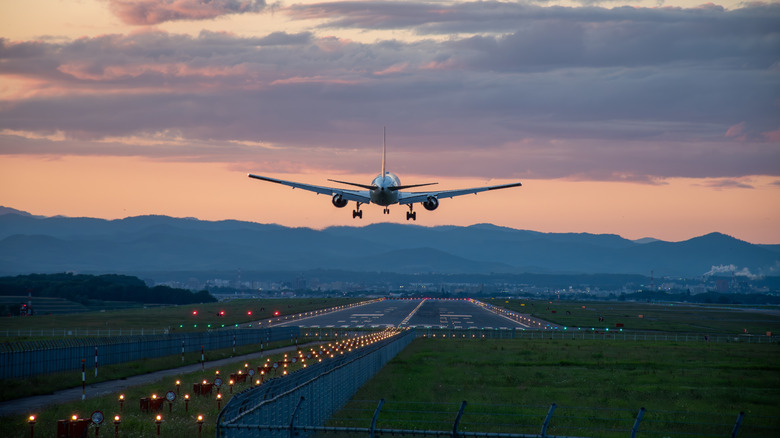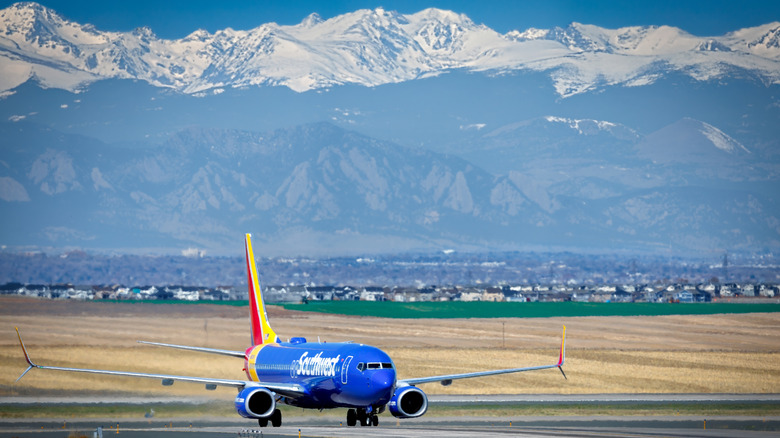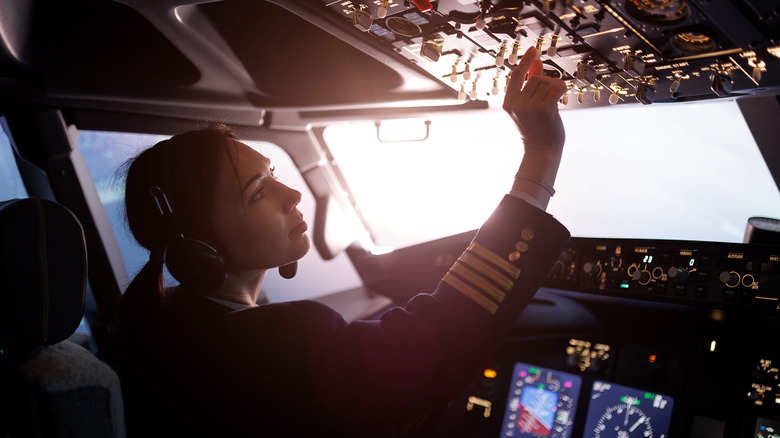The World's Most Turbulent Airports Share This One Geographic Feature In Common
If you are flying to Rocky Mountain National Park, you'll most likely land in Colorado's state capital of Denver (incidentally, also America's craft beer capital). As you approach the Denver International Airport, you may feel a few unwelcome bumps in the flight. While it may be disconcerting, turbulence as you approach Denver airport should not be a surprise. Turbulence forecasting tool, Turbli, has ranked Denver as the most turbulent airport in North America in 2024, followed closely by Bozeman Yellowstone International Airport in Montana. Both airports have an average eddy dissipation rate, or EDR – a measure of the intensity of turbulence — above 17, putting them in the "light" turbulence category.
However, if a mid-air jostle makes you nervous, spare a thought for those flyers descending into the international airports of Santiago, Chile; Mendoza, Argentina; and Lhasa in the Tibet region of China. All three airports have a "moderate" turbulence rating with average EDRs of 20 and above. What do all these airports have in common? Mountains. Specifically, the Andes, the Himalayas, and the Rockies. In fact, mountains can increase the severity of turbulence because large ranges disrupt the flow of wind, much to the discomfort of flyers.
Why do mountains cause turbulence?
Turbulence is a common natural phenomenon. We see it whenever smoke curls away from a flame into wild spirals, or in the choppy froth that trails in the wake of a boat engine. Generally, turbulence is considered to be the chaotic and sudden, sometimes violent, shift in the movement of either air or fluid. Unfortunately, when a plane gets caught in an eddy of air, the passengers inside get tossed about too.
To see how mountains can make turbulence more severe, let's take a look at Denver. Colorado's capital is located in the Denver Convergence Vorticity Zone. The city is uniquely placed next to the flat, rolling land of the Great Plains on the east and the steep peaks of the Rockies to the west. This causes air currents to swoop up to rise above the mountains. Furthermore, the cold air coming down from Canada crashes headlong into the warm air traveling up from the Gulf of Mexico, resulting in thunderstorms and sharp swirls of air that can spawn tornadoes. Navigating these powerful winds, in addition to snow and rain, can test even the most experienced pilot.
"When you're flying over those mountains," explained pilot Ryan Tseko to Weather.com, "All of that wind, all of that weather is riding up those ridges, and it actually is forcing that air up. And so when you're flying over the top of those mountains, that's where you're gonna get more turbulence compared to other flat areas."
How to prepare yourself for turbulence
If plane turbulence leaves you rattled, you might be wondering how you can prepare yourself before flying. Especially as climate change may make future flights bumpier and bumpier. First, plan ahead. Do some research and find out which flight routes experience the worst turbulence, so you know what to expect. Then, when you book your flight, consider early morning or late night flights as the best time to avoid turbulence.
The Reddit forum FearOfFlying is also full of tried and tested strategies to weather a bumpy ride. Among the most popular tricks is to place a plastic bottle of water on your table and focus on the water as turbulence hits. You may be surprised to find that a big bump causes only a ripple in the water, reminding you that the turbulence is actually mild. Other posters suggest lifting your legs to feel less turbulence (bonus points for the ab workout) and listening to your favorite silly pop songs to distract you. Some nervous flyers who hate turbulence also swear by a game-changing app to keep them calm. However you choose to deal with the discomfort of turbulence, it's good to remember that it is temporary. As one user put it on Reddit: "Imagine that each air stream is a road, and turbulence is like driving down a road with potholes. It doesn't feel great but eventually the pilot will find a smoother "road"."


